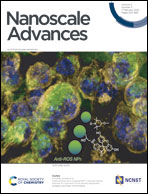Recent advances in the aqueous applications of PEDOT
Abstract
Water is ubiquitous in life – from making up the majority of the Earth's surface (by area) to over half of the human body (by weight). It stands to reason that materials are likely to contact water at some point during their lifetime. In the specific case of sensors however, there is a need to consider materials that display stable function while immersed in aqueous applications. This mini-review will discuss the most recent advances (2018 to 2021) in the application of the conducting polymer poly(3,4-ethylenedioxythiophene) (PEDOT) in aqueous environments. At its heart, the use of PEDOT in aqueous applications relies on nanoscale understanding and/or nanoengineered structures and properties. This enables their use in water-based settings such as within the human body or buried in agricultural soils.

- This article is part of the themed collection: Recent Review Articles


 Please wait while we load your content...
Please wait while we load your content...